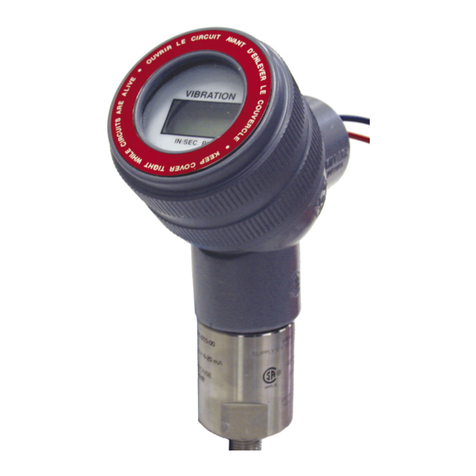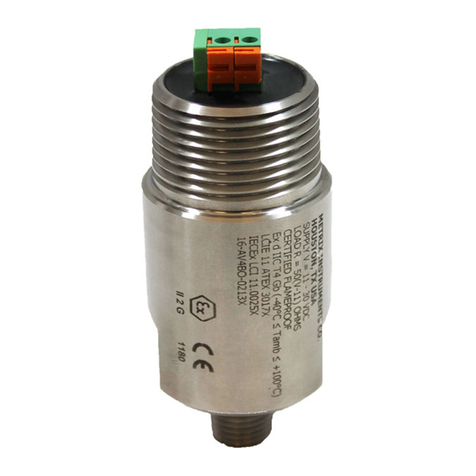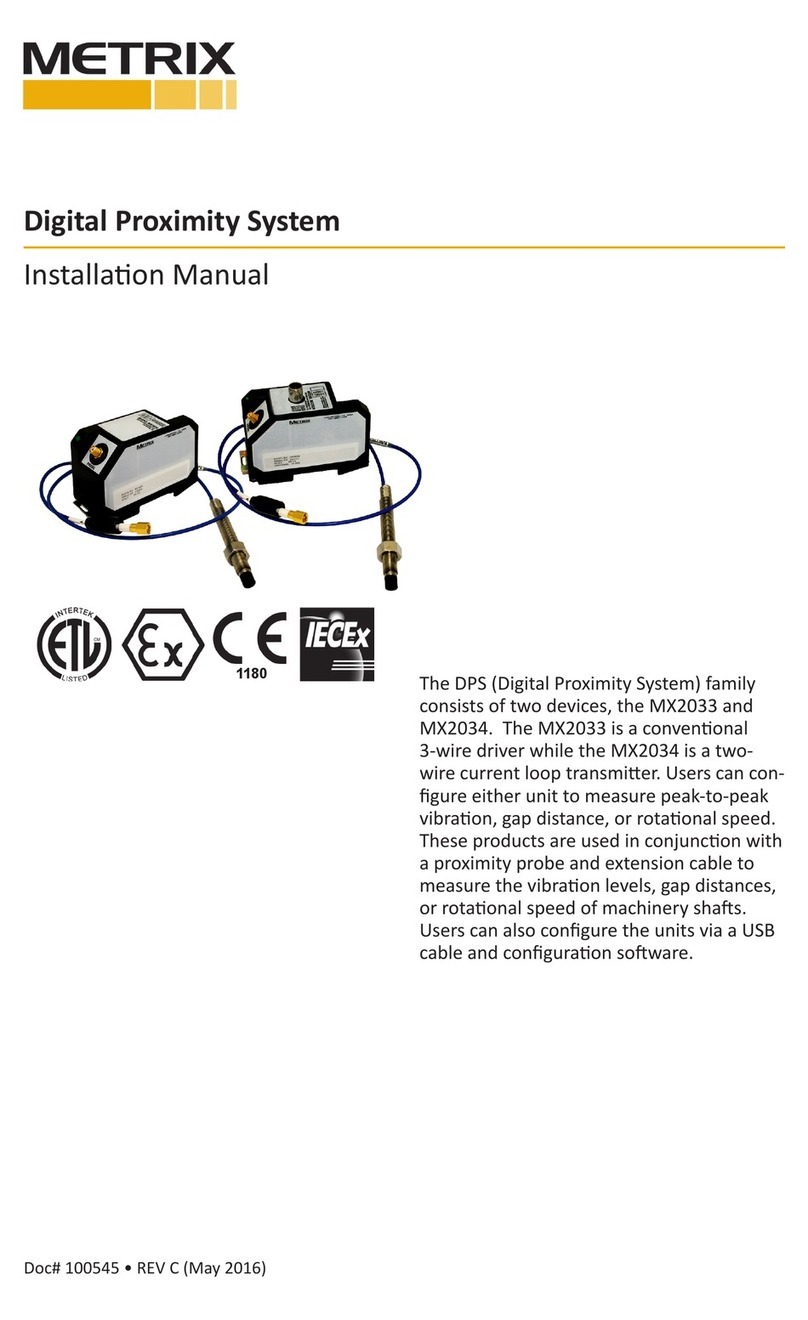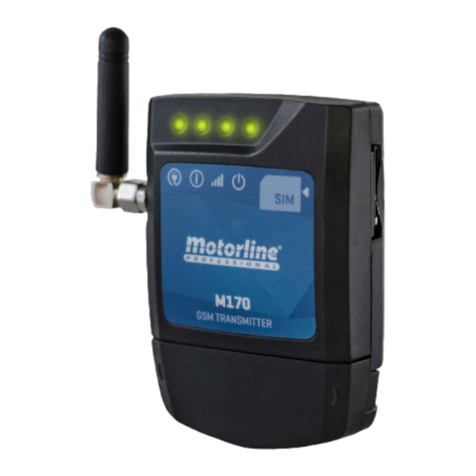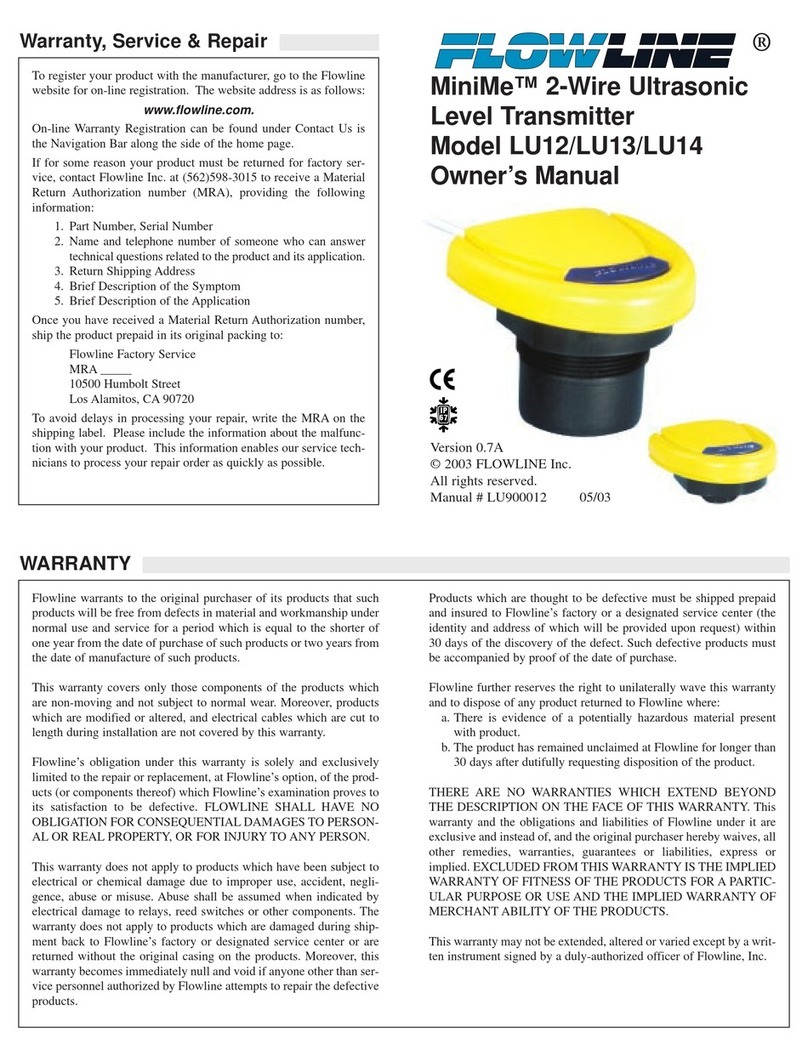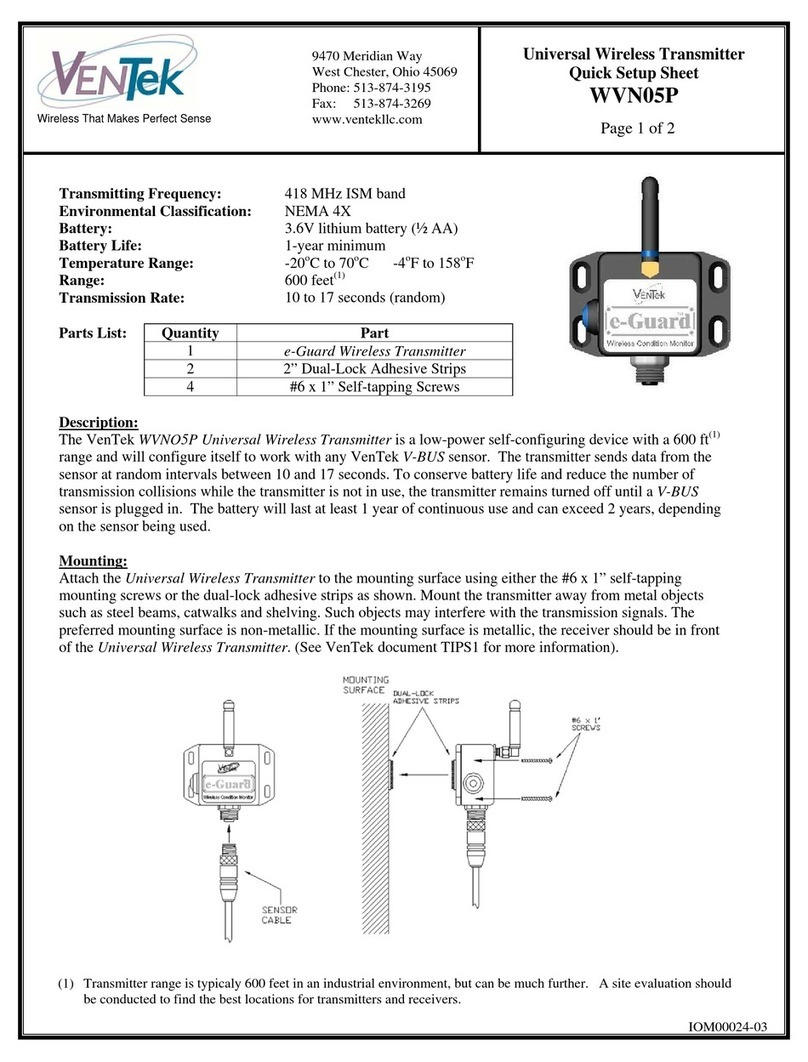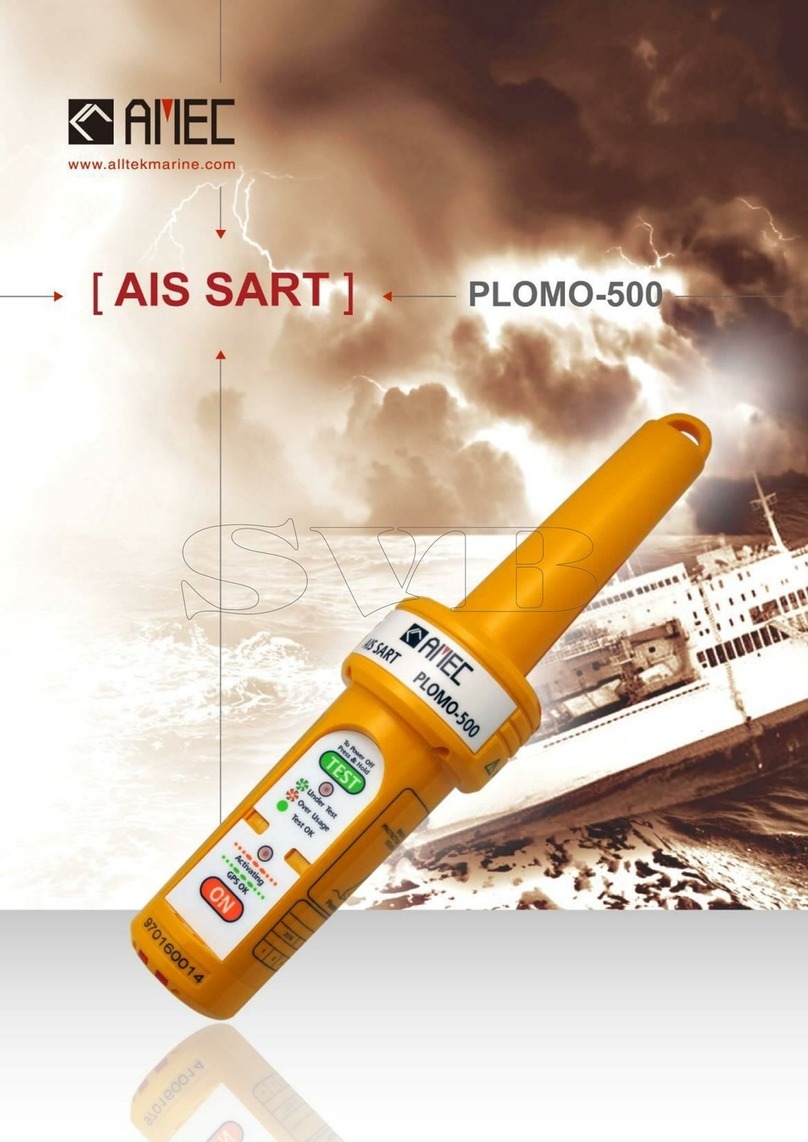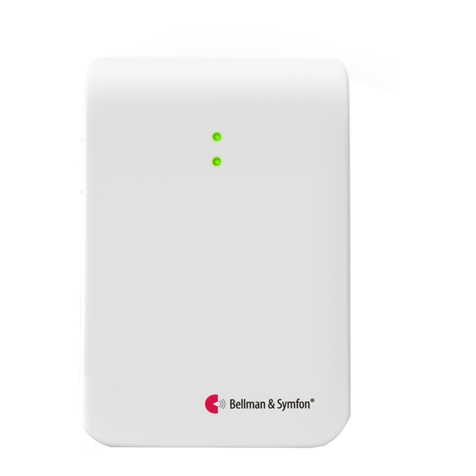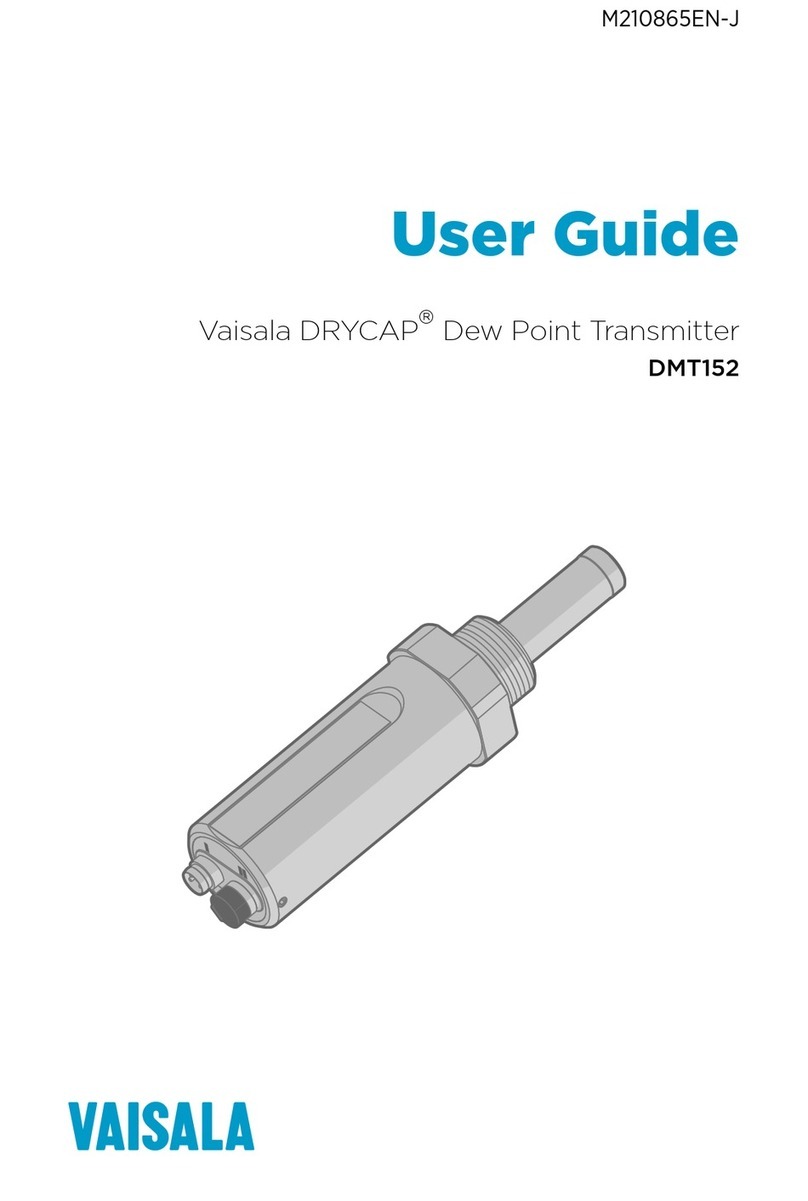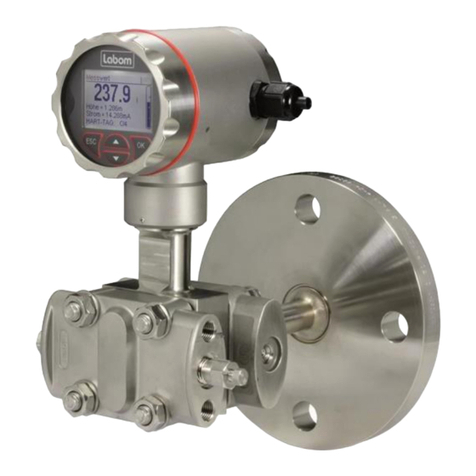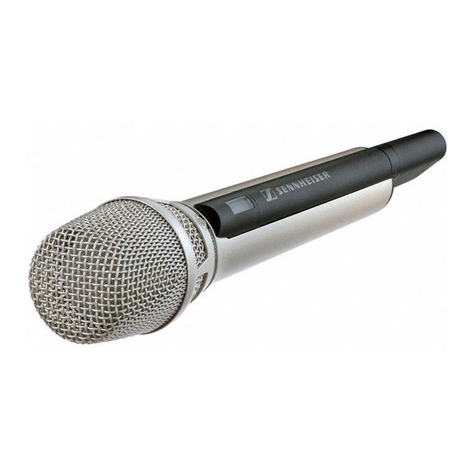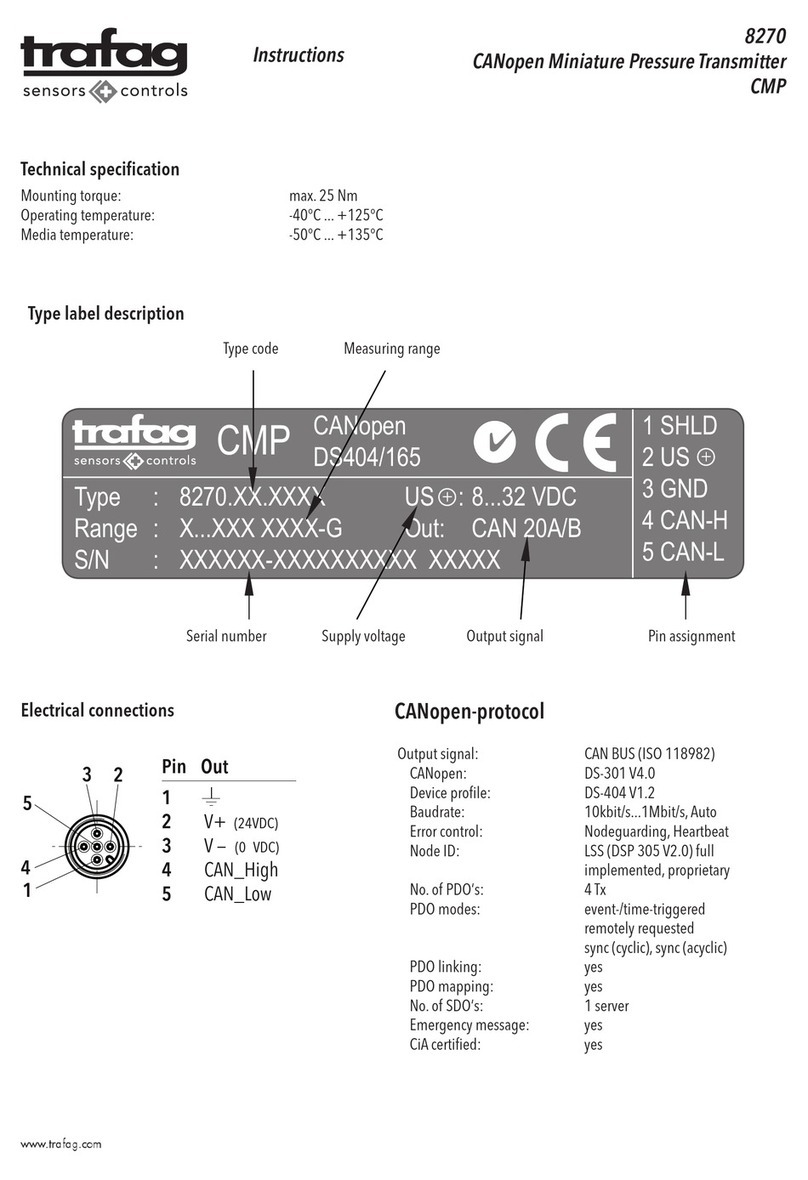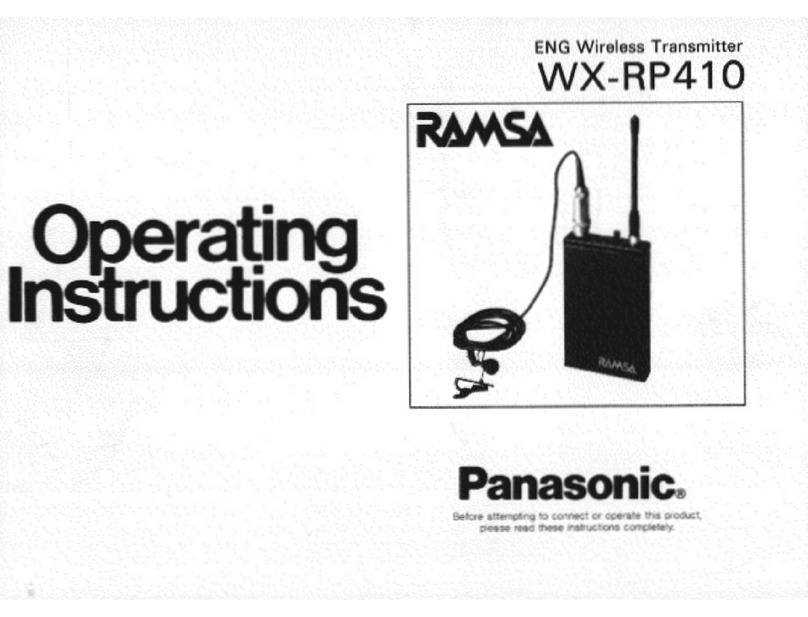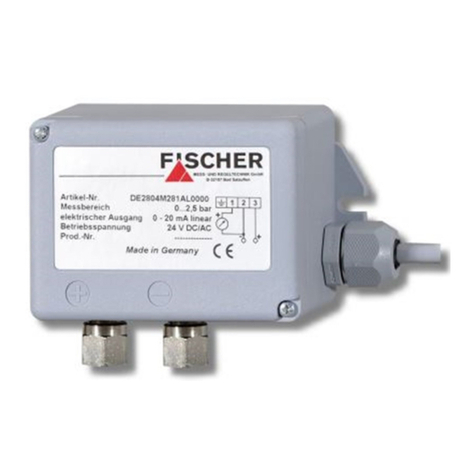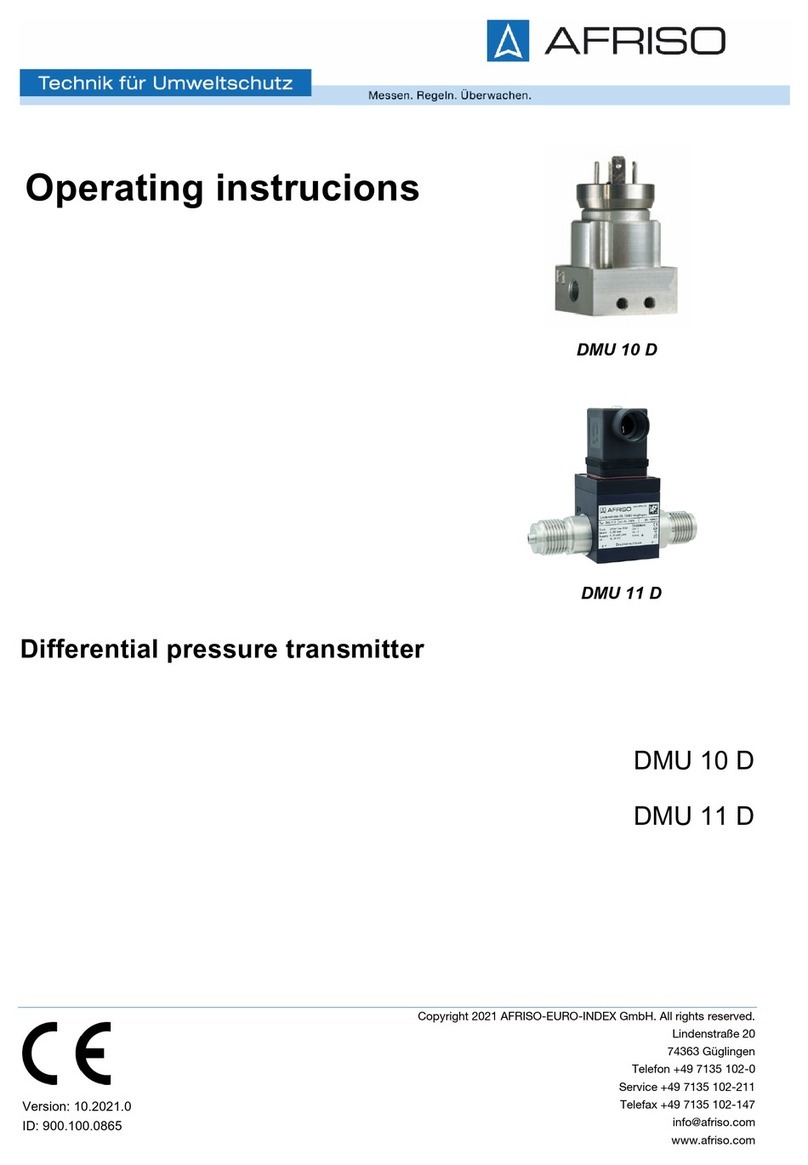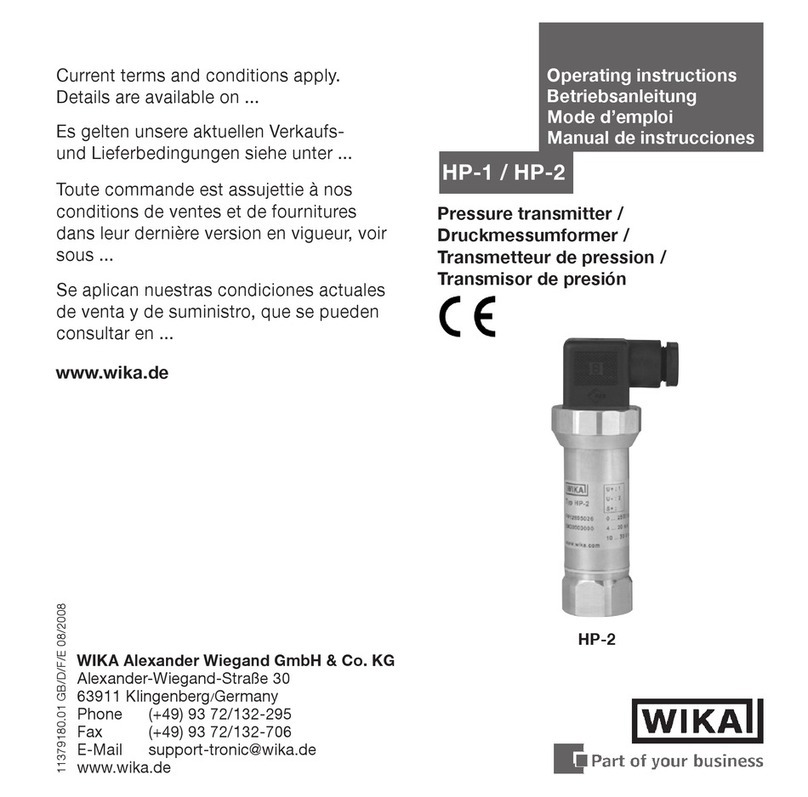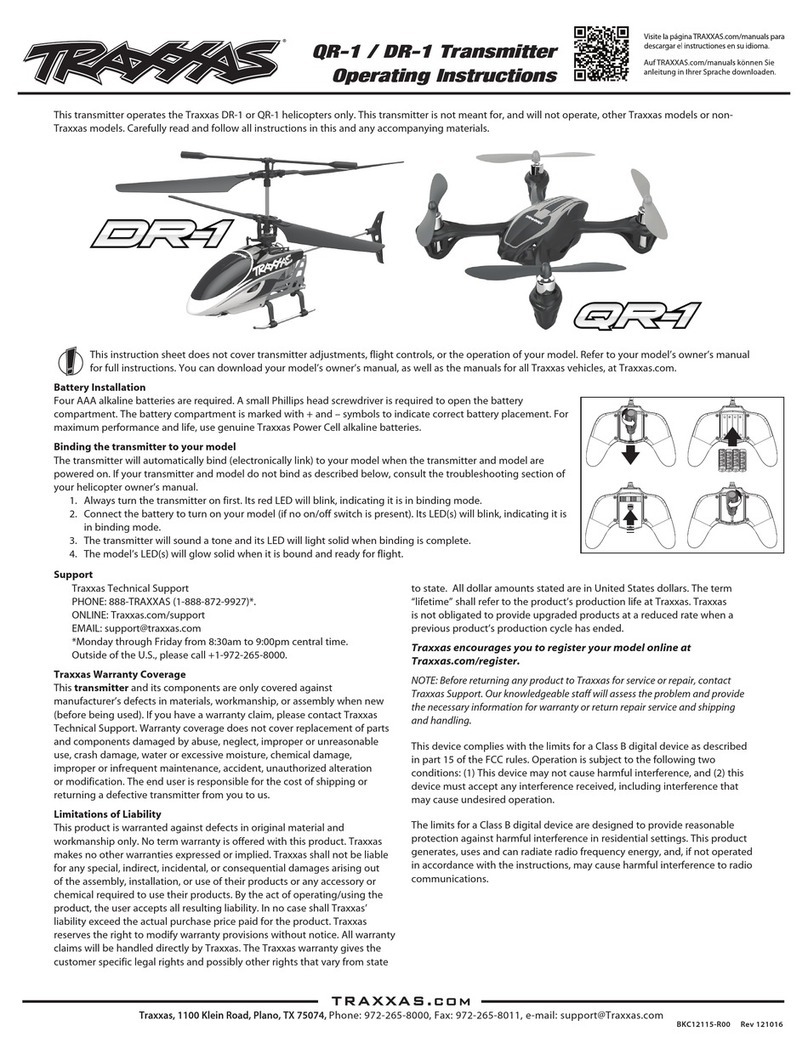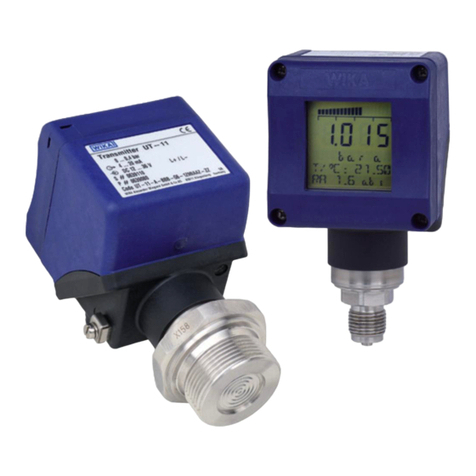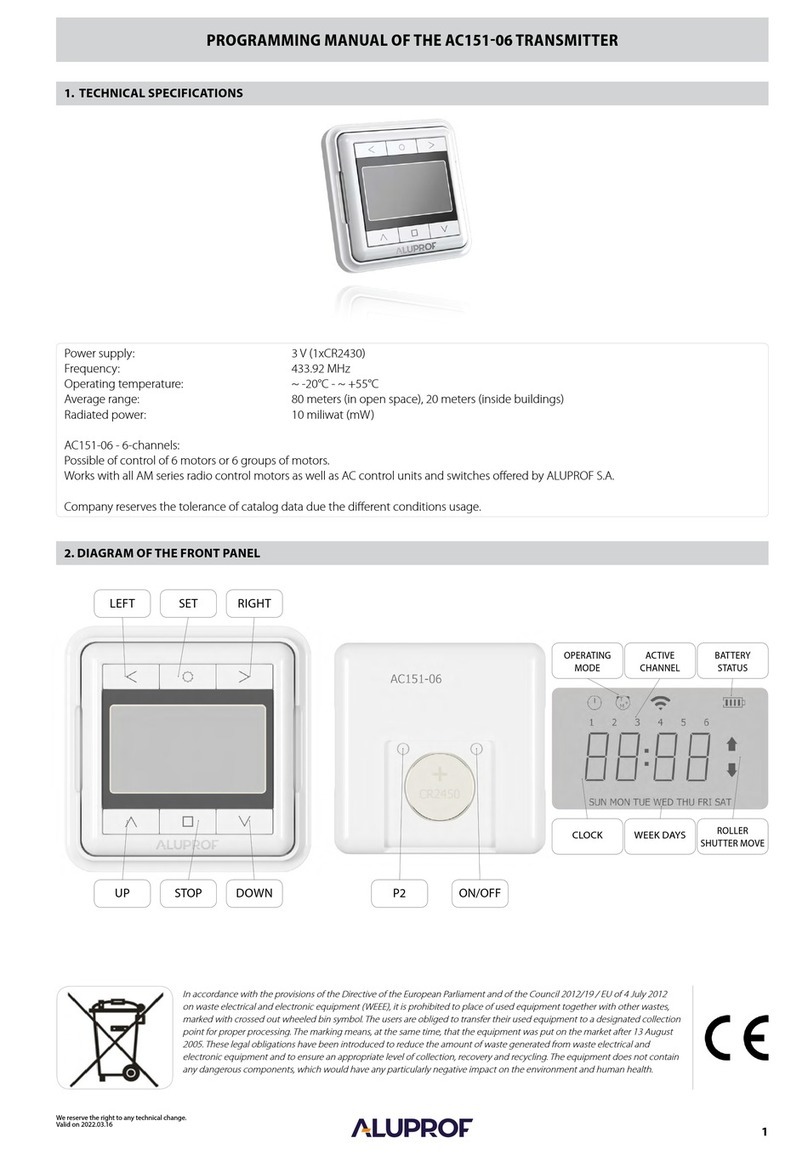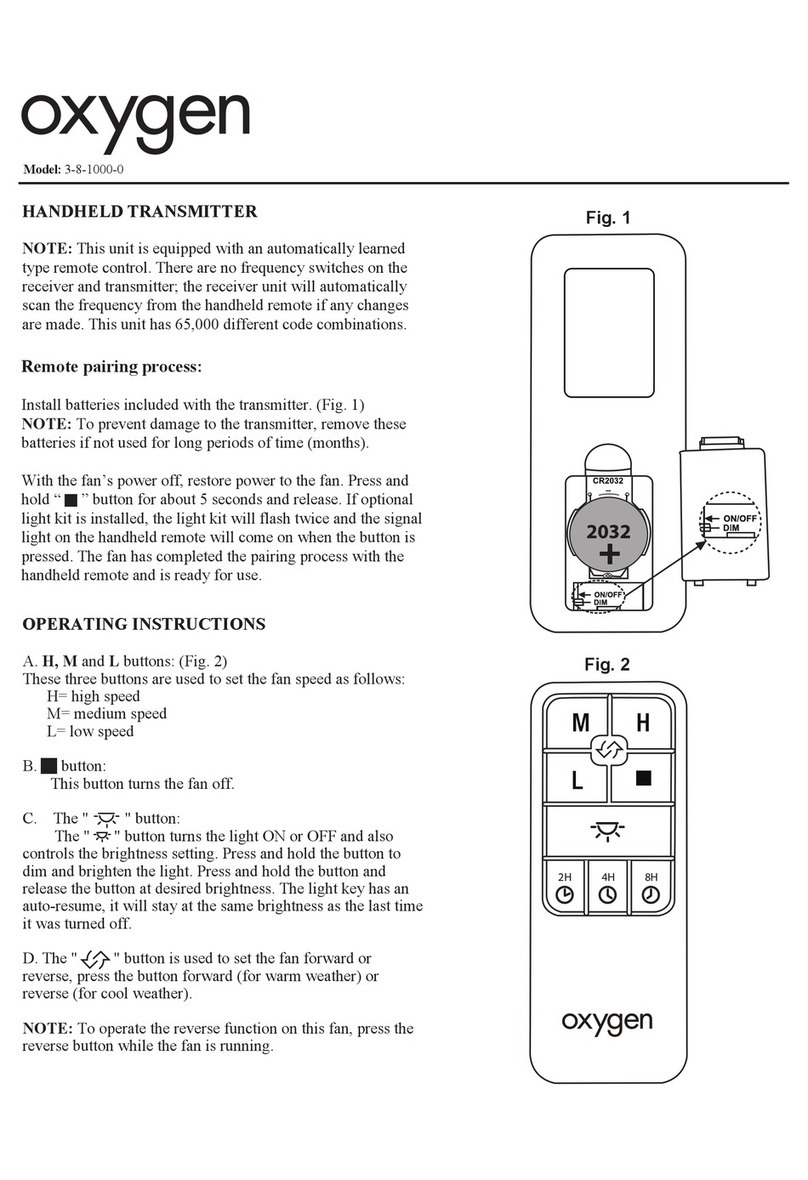Metrix ST5484E User manual

Manual
ST5484E 2-Wire Seismic Vibration Transmitter
Document 9162
Rev. T (Oct 2013)
1. Overview
The Model ST5484E Seismic Vibration Transmitter combines a vibration sensor and signal
conditioner in a single package for sensing machinery vibration level and transmitting a
proportional 4-20 mA signal directly to a PLC, DCS, monitor, or computer.The 2-wire flying lead
version is shown at right. Versions with 4 wires, terminal blocks, or MIL-type connector are also
available.
The transmitter has no moving parts and is encapsulated in a stainless steel housing. Each
transmitter is factory calibrated to the sensitivity marked on the label. An optional dynamic
signal output can be specified.
2. Mounting
It is important the transmitter body be solidly mounted to the machine surface. Refer to section 6 on transducer placement.
Different machine preparations are required for the two basic transmitter mounting styles; NPT (National Pipe Thread) and
machine thread (UNF and Metric). Transmitters with the NPT type mounting stud are secured by the thread engagement and
the base of the transmitter does not come in contact with the machine surface. On the other hand, transmitters with the
machine thread studs must make contact with the machine surface. The base of the transmitter must make square and
direct contact. This requires preparing the surface of the machine with a 1 1/2 inch counter bore (surfacing tool). This tool
can be used with a portable drill equipped with a magnetic base but care must be taken so that the tapped and threaded hole
is perpendicular to the machined surface. The transmitter must make contact all the way around its base surface. Contact
Metrix for more detailed instructions for using a counter bore.
If installing a transmitter with a standard 1/4 inch NPT stud, drill a hole using a 7/16 inch bit, 5/8-7/8 inch deep. Then tap
using a 1/4 - 18 NPT (tapered pipe tap). Hand tighten the transmitter and then turn an additional 1 to 2 turns using a wrench
on the wrench flats. Do not use a pipe wrench. A pipe wrench can apply extreme forces to the body and potentially damage
electronic components. A minimum of five (5) threads of engagement should be made. A 1/4 inch to 1/2 inch NPT bushing is
available for mounting the transmitter in existing 1/2 inch NPT holes. Also, a Model 7084 Flange Adapter can be used
between the transmitter and the machine surface when there is not enough surface thickness to drill and tap a hole. The
flange adaptor mounts with three small screws.
If installing a transmitter with one of the straight machined thread sizes, follow standard drill and tap procedures. Be sure to
not drill a hole larger that the counter bore pilot diameter before using the counter bore to prepare the machine surface.
Drill out the hole with the correct tap drill size after preparing the surface.
The sensitive axis of the transmitter is in line with the mounting stud. The transmitter can be oriented in any (0 to 360
degree) position.

Document 9162 Manual - ST5484E 2-Wire Seismic Vibration Transmitter Page 2 of 7
Rev. T (Oct 2013)
3. Wiring
The ST5484E is connected like any other loop powered transmitter. The following is a summary based on area designations.
CAUTION: Use of a high speed torque screwdriver may cause damage to terminal blocks.
3.1 General
Connect the field wiring in accordance with the appropriate portion of Figure 1, which illustrates both single- and multiple-
transmitter loops.
The ST5484E transmitter requires a minimum of 11 VDC for proper operation. This is the minimum voltage required at the
transmitter (not the power supply), after all other voltage drops across field wiring and receiver input impedance have been
accounted for with the maximum 20mA of loop current flowing. The minimum loop power supply voltage required is
therefore 11 VDC plus 1 volt for each 50 ohms of total loop resistance.
Example:
Component Resistance
Signal wiring 10 ohms
DC Input Impedance of receiver 250 ohms
TOTAL LOOP RESISTANCE 260 ohms
Minimum supply voltage = 260 (1V/50 ohms) + 11V = 16.2 VDC
The maximum loop power supply voltage that may be applied is 30 VDC. The maximum loop resistance (RL) is calculated by
the equation:
RL= 50 (VS- 11) ohms
Example:
RL= 50 (24 - 11) = 650 ohms for 24 VDC loop supply.
Figure 1

Document 9162 Manual - ST5484E 2-Wire Seismic Vibration Transmitter Page 3 of 7
Rev. T (Oct 2013)
3.2 Intrinsically Safe Installation In Hazardous Locations
Connect the field wiring in accordance with Metrix drawing 9426 for CSA Class I, (A,B,C & D) and Metrix drawing 9278 for
IECEx / ATEX (Ex ia IIC T4 Ga) approvals. These drawings are available for download from www.metrixvibration.com. The
leads must be terminated inside an enclosure that affords a degree of protection of at least IP20. Metrix elbow 8200-001
may be used for these purposes. Refer to datasheet 1004457 for additional details on accessories. The ambient temperature
range is -40° to 100°C. The transmitter requires a minimum of 11 VDC for proper operation. The voltage drop across the
specified non-isolated barriers with a 20 mA loop current is 8.1 VDC.
The minimum loop power supply voltage required is 19.1 VDC plus 1 volt for each 50 ohms of loop resistance. The maximum
loop power supply voltage that may be applied to the safety barrier is 26 VDC. Therefore, the maximum loop resistance with
a 26 VDC supply is 345 ohms.
Example:
Component Resistance
Signal wiring 5 ohms
DC Input Impedance of receiver 100 ohms
TOTAL LOOP RESISTANCE 105 ohms
Minimum supply voltage =
105 (1V/50 ohms) + 19.1 V = 21.2 VDC
3.3 Explosion-Proof Installation In Hazardous Locations (CSA)
ST5484E transmitters are CSA certified explosion-proof, Class I (B, C & D); Class II (E, F & G,). Connect the field wiring in
accordance with the appropriate portion of Figure 1. Refer to paragraph 3.1 for loop voltage and resistance requirements.
All conduit and junction boxes used must be certified explosion-proof for the class, division, and group required by the
application. Installation of the transmitter must meet all of the explosion-proof installation requirements of the local
governing agency and facility safety procedures.
3.4 Flame-Proof Installation In Hazardous Locations (ATEX, IECEX)
ST5484E transmitters are ATEX/IECEx certified flame-proof, Ex d IIC T4 Gb. Connect the field wiring in accordance with the
appropriate portion of Figure 1. Refer to paragraph 3.1 for loop voltage and resistance requirements. All conduit and
junction boxes used must be certified flame-proof for the area required by the application. Installation of the transmitter
must meet all of the flame-proof requirements of the local governing agency and facility safety procedures. The 8200-001-IEC
elbow is required to meet this approval.
ATEX Conditions for Safe Use:
In order to ensure temperature classification and safety, the power supply should adhere to the following:
Uo ≤ 30V, Io ≤ 100mA, and Po ≤ 0.75W
Ambient Operating Temperature: -40°C to +100°C

Document 9162 Manual - ST5484E 2-Wire Seismic Vibration Transmitter Page 4 of 7
Rev. T (Oct 2013)
4. Electromagnetic Compatibility
In order to meet the requirements of electromagnetic compatibility in areas of high electromagnetic interference, the field
wiring must be:
•Shielded twisted pair cable enclosed in grounded metallic conduit, or
•Double shielded twisted pair cable with a metallic body cable gland fitting and with the outer shield grounded.
Use standard two-conductor, twisted pair, shielded wiring for the long run to the instrumentation enclosure. The transmitter
is connected like any other loop-powered end device.
NOTE: Metrix also strongly recommends the use of our ferrite bead kit (p/n 100458) as an extra precaution against
electromagnetic interference that may be induced in field wiring from subsequently bleeding into the transmitter. Refer to
best practices document 100459 for additional information, available at www.metrixvibration.com.
5. Connection to PLC or other Indicating Instrument
The first step in configuring the PLC, DCS, or other recording instrument is to determine the source of power.
The ST5484E requires loop power. Some analog input channels on a PLC or DCS, for example, provide this power from within.
If they do not provide power, an external power supply must be provided. Connect the transmitter field wiring using
standard instrumentation practices.
Scaling of the display is on the basis of the range of the
transmitter. The measurement parameter name is
“vibration” and the units are “in/s” (inches per second) or
“mm/s” (millimeters per second). The example at right is
based on a standard 1.0 in/s transmitter.
Momentary “jolts” that can occur at start-up, or during some operating condition changes, do not reflect a machine’s steady-
state operating condition. In order to prevent such occurrences from generating nuisance alarms, program a time delay into
the alarm such that the indicated vibration level must persist above the alarm setpoint for a preset period of time before an
alarm is generated. The indicated vibration level must cross the threshold level and stay above it for a preset time before any
alarm action is taken. A 2- to 3-second delay is normally applied to most machinery. Consult Metrix if you have a question
about your machine’s operating characteristics.
Some rough starting machinery may also need a start-up time lockout for alarms. A start-up lockout is different than a time
delay. A start-up lockout functions the same as a time delay, but is usually set to a much longer time. Both may be needed.
When vibration level
at transmitter is…
Transmitter
output will be…
PLC (or other)
should read…
0.0 in/s
(i.e., no vibration)
4.0 mA
(± 0.1 mA)
0.00 in/sec
1.0 in/s
(i.e., full scale
vibration)
20.0 mA
(± 0.5 mA)
1.00 in/sec

Document 9162 Manual - ST5484E 2-Wire Seismic Vibration Transmitter Page 5 of 7
Rev. T (Oct 2013)
Figure 3
6. Typical Transmitter Placement
The ST5484E measures seismic vibration (i.e., vibration velocity) at the
attachment point on the machine, using engineering units of in/s (inches
per second) or mm/s (millimeters per second) depending on which ordering
option has been selected. The transmitter’s sensitive direction is through
the long axis of its cylindrical body. It will not measure side-to-side motion
Typical transmitter mounting for casing vibration measurements is in the
horizontal direction at the bearing housings as depicted in Figures 2. The
horizontal direction usually incurs more vibration because most machines
are more compliant in the horizontal axis than the vertical axis (i.e., the
machine’s foundation constrains vertical vibration more than horizontal
vibration). Figure 2
A horizontal mounting arrangement is also depicted in Figure 3, but with additional detail showing typical accessories. When
flying leads are ordered, a 24 inch or 72 inch length may be specified using ordering option D. These leads may be cut to
length in the field and then spliced to field wiring as shown in Figure 3.
NOTE: Hazardous area locations do not allow a splice at the location shown in Figure 3. Instead, the splice must be made in a
second conduit hub (meeting splicing requirements) located at the end of flexible conduit.

Document 9162 Manual - ST5484E 2-Wire Seismic Vibration Transmitter Page 6 of 7
Rev. T (Oct 2013)
Figure 5 – Top view showing optional dynamic output
connections on transmitters with terminal blocks
When attaching conduit to the transmitter, observe the following:
•Because the transmitter is sensitive to vibration, avoid unsupported lengths of conduit and excessive mass (such as
large hubs or junctions) hanging directly off the end of the transmitter. These can introduce unwanted vibrations
that do not reflect actual machinery vibration. These can also introduce mechanical stresses that cause the
transducer to fail prematurely.
•A “Y” type conduit elbow such as the Metrix 8200 is preferred because it prevents the conduit from extending too
far away from the transmitter, thus limiting the likelihood of breakage by personnel working on or near the machine.
It also precludes long unsupported lengths of conduit directly aligned with the transmitter’s bore (longitudinal axis)
as noted in the bullet above.
•Avoid attachment of rigid conduit directly to the transmitter; instead, use a small length of flexible conduit to
mechanically isolate the transmitter from vibration that might occur in rigid conduit.
•If a 1-inch to 3/4-inch reducer is used at the elbow, a smaller diameter flexible conduit can be used.
7. Calibration
The ST5484E transmitter has been factory calibrated for the full scale
vibration level marked on the label. If the calibration is in doubt the
unit can be verified in the field by following the procedures outlined
below. Note that there are no Zero and Span adjustments on the
transmitter. Also note that the transmitter uses a true RMS amplitude
detection circuit; units supplied with a full scale range in peak units
scale the underlying RMS measurement by a factor of 1.414 to provide
a “derived peak” rather than true peak measurement.
7.1 Zero Verification In the absence of vibration the output
current should be 4 mA ±0.1 mA. If the ambient vibration is more
than 2% of full scale, the transmitter should be removed from the
machine and placed on a vibration free surface for this
measurement. Often a piece of foam can be used to isolate the
transmitter from external motion.
7.2 Span Verification Subject the transmitter to a known
vibration within the full scale range marked on the label. If using a
portable vibration shaker where it can be tested at full scale, the
output should be 20 mA ±0.5 mA.
8. Optional Dynamic Output
The transmitter can be ordered with an optional dynamic output.
Transmitters supplied with this option can be identified by the
presence of 4 flying leads instead of 2 (Figure 4), or 4 terminal connections instead of 2 (Figure 5).
Figure 4 – Top view showing optional dynamic output
connections on transmitters with flying leads

Document 9162 Manual - ST5484E 2-Wire Seismic Vibration Transmitter Page 7 of 7
Rev. T (Oct 2013)
Metrix Instrument Company
8824 Fallbrook Drive
Houston, TX 77064 USA
(281) 940-1802
www.metrixvibration.com
info@metrixvibration.com
Trademarks used herein are the property
of their respective owners.
Data and specifications subject to change
without notice.
© 2013 Metrix Instrument Company, L.P.
This output is an acceleration signal with a sensitivity of 100 mV/g, filtered to the same frequency band as used for the 4-
20mA velocity measurement (refer to options E and F in the product datasheet, document 1004457). Observe the following
when using this output:
•Only an electrically-isolated or battery-powered portable vibration analyzer should be used when connecting to this
output. Since this is a loop- powered device, an external ground will affect the loop output and could cause a false
alarm.
•When using a portable vibration analyzer or data collector, be sure to turn the instrument sensor power off.
•Most portable vibration analyzers have a low input impedance and they will load
this signal, resulting in attenuation of as much as 20 to 30%. Refer to Table 1 at
right showing the nominal attenuation expected for a given input impedance.
•In all cases for all locations, the use of this signal is for temporary connection only.
Permanent connection could violate hazardous location installation requirements.
•Care should be exercised to avoid introducing electrical noise when using this
output.
•Care should be exercised to avoid impacting the transmitter or introducing other
mechanical vibrations when connecting to this output. Such vibration could result
in spurious alarms or machinery trips.
•When output is not in use, be sure leads cannot touch conduit or each other as this
will affect the 4-20 mA current output.
•Do not use this output with leads longer than 5m (16 feet). Use of longer leads will introduce electrical noise and
attenuate high-frequency signal content that may be present in the raw acceleration signal.
9. Specifications, Ordering Information, and Outline Dimensional Diagrams
Refer to product datasheet 1004457.
Table 1
Input Impedance
of Analyzer
dB
Attenuation
10 MEG
0.01
5 MEG
0.02
2 MEG
0.04
1 MEG
0.09
500 K
0.18
200 K
0.43
100 K
0.84
50 K
1.61
20 K
3.57
10 K
6.10
Other manuals for ST5484E
1
Table of contents
Other Metrix Transmitter manuals
